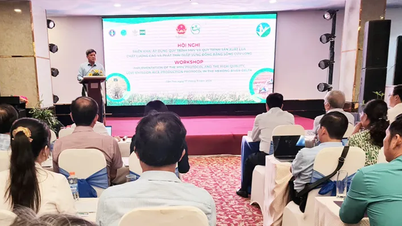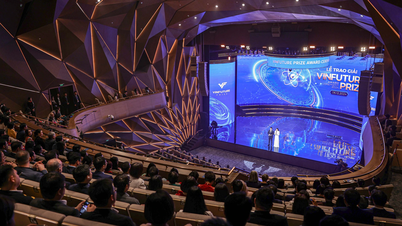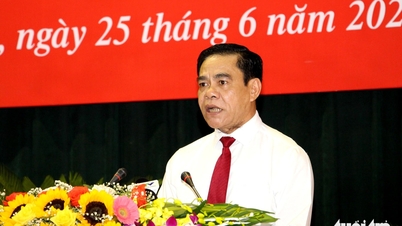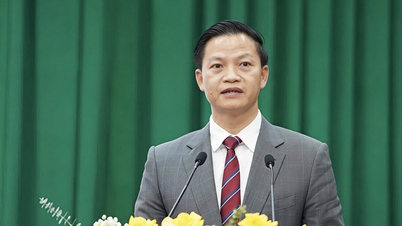State Audit plays a leading role
So what is "KTNN"?
For a long time, we have had the habit of immediately thinking of KTNN when mentioning it. State-owned enterprises (SOEs). This is not wrong, but it is not complete. The concept of State-owned enterprises has a broader connotation. That is: (i) National resources (land, minerals, marine resources...). (ii) State budget and state financial funds. (iii) Socio- economic infrastructure system invested and managed by the state. (iv) State Bank and macro-regulation tools. (v) State-owned enterprises (especially large corporations and groups).
What does “leading role” mean? “Leading role” does not mean that the State Audit must account for the largest proportion of GDP or intervene in all areas. Instead, the leading role is understood in the following aspects: (i) Orientation and leadership: The State Audit is an important material tool for the State to perform the function of orienting and leading the development of the entire economy according to strategic goals (rich people, strong country, democracy, fairness, civilization). (ii) Macroeconomic regulation and stability: Through tools such as fiscal policy, monetary policy and the strength of large State-owned enterprises, the State intervenes to stabilize the market, control inflation, and respond to shocks (such as pandemics, economic crises). (iii) Paving the way and creating: The State Audit (mainly through public investment) focuses on key, essential, high-risk areas, or areas that the private sector does not want or cannot do (for example: key transport infrastructure, energy, defense, security, national digital transformation). This creates a "playground" and foundation for other economic sectors to develop. (iv) Implementing social policies: The State Audit is a tool for the State to ensure social security, provide basic public services, reduce poverty and reduce inequality (such as investing in health care and education in remote areas).
Figuratively, the “leading” role here is that of the helmsman, the leader, ensuring the economic boat is on the right track and operating stably, not necessarily the strongest rower.

KTTN is the most important driving force
The 13th National Party Congress (2021) identified the private sector as “an important driving force”. But identifying the private sector as “the most important driving force” in the draft documents submitted to the 14th National Party Congress is truly a big step forward in thinking.
What does “driving force” mean? If the State-owned economy is the “steering wheel” (main), then the private economy is the “driving force” expressed in the following aspects: (-) Creating GDP growth: This is the sector that generates the majority of economic growth. (-) Creating jobs: The private economy (including private enterprises and individual business households) is attracting the majority of the social labor force and creating millions of new jobs each year. (-) Innovation: The private sector is flexible and highly responsive to the market. This is where start-up activities, technological innovation and application of new business models take place. (-) Enhancing competition: The development of the private economy creates a healthy competitive environment, promoting the entire economy (including the state-owned enterprise sector) to innovate to improve efficiency. (-) International integration: Private enterprises increasingly play a large role in exports, participating in global value chains.
Why is it “most important”? The emphasis on the word “most important” is a practical affirmation: Without the dynamic development of the private economy, the economy cannot achieve high and sustainable growth targets. This affirmation creates a strong policy message about continuing to untie and create all favorable conditions for the development of the private economy.
Dialectical relationship: “dominant” and “most dynamic”
This is the most profound part. These two concepts are not contradictory but complement each other dialectically in the socialist-oriented market economy model of Vietnam. The "main" state economy to create a foundation for the private economy (driving force) to develop: The main role of the state economy is to create a fair and transparent legal environment, a synchronous infrastructure system and a stable macro foundation. This is the "runway" for the "engine" of the private economy to take off. The private economy is the "driving force" to enrich the country and strengthen the overall strength: When the private economy develops strongly (creating wealth, jobs, paying taxes), the economy in general will become stronger. This helps the State have more resources (from the budget) to better perform its "main" role (reinvesting in infrastructure, social security). It can be understood that the (main) state economy is like the driver and the steering wheel and brake system. The driver determines the direction (socialist orientation), ensures the car is safe (macroeconomic stability) and complies with the law (law). The most powerful engine is the car's engine. The stronger the engine (more developed the economy), the faster the car goes (economic growth).
Thus, affirming that “State-owned enterprises play a leading role” is to ensure the stability and political orientation of the regime. Affirming that “private enterprises are the most important driving force” is to liberate productive forces, create growth and prosperity. This is the combination of political-social goals (leading) and economic-efficiency goals (driving force) in a unified whole.
On the role of the FDI sector
If the State-owned economy is the “steering wheel” (main) and the private economy is the “engine” (driving force), then the FDI sector (foreign direct investment) is like a “turbocharger” or a “catalyst”. It is not an endogenous component, but plays an extremely important role in promoting the speed and quality of the economic machine.
In Party documents, the FDI sector is often identified as an important component of the economy. Because FDI brings a huge amount of social investment capital, helping Vietnam solve the problem of lack of capital for infrastructure development and industrialization. This is also the most important channel to bring source technology, high technology and modern management experience of the world into Vietnam. It contributes significantly to making Vietnam an important link in the global supply chain (typically Samsung in the electronics industry). It is also the sector that contributes the largest part to Vietnam's total export turnover in recent years. Finally: The presence of FDI enterprises with high standards of products and services has forced domestic private enterprises to innovate and improve their competitiveness to survive and develop - FDI creates competitive pressure (positive spillover).
State-private-FDI relationship
Stringing all three components together shows how the overall economic model works. The success of the Vietnamese economy does not depend on a single pillar but on the effective interaction of all three.
This is a “three-legged” relationship, in which: (i) State Audit (leading role - creator): Not only the “driver” as analyzed, State Audit must also play the role of “creator” of the environment. For private enterprises: Must create a legal environment (law) that is equal, transparent, reduces transaction costs, fights petty corruption, so that the private “engine” runs best; State Audit also invests in hard infrastructure (roads, seaports, electricity) and soft infrastructure (education, healthcare) to create a foundation for the private sector; for FDI: State Audit is the “gatekeeper” and “carpet-roller”. Gatekeeper to select high-quality FDI projects (high-tech, environmentally friendly), avoid “dirty” or labor-intensive FDI. Carpet-roller with preferential mechanisms and policies to attract the right subjects. (ii) Private sector (the most important driving force - endogenous strength): This is the pillar that demonstrates the internal strength and autonomy of the economy. A country cannot be sustainably rich and strong if it only relies on FDI; the growth of the private sector (with large private corporations and national brands) is a measure of the maturity of the economy. The biggest challenge today is how the private sector can absorb technology from FDI and link into the FDI value chain, not just do processing or provide simple services. (iii) FDI sector (catalyst - external resources): This is an important external resource to promote the modernization process. However, if the private sector is too dependent on FDI and does not grow commensurately, the economy will be vulnerable when FDI capital flows reverse.
Putting “private sector is the most important driving force” next to “State sector plays the leading role” shows a subtle but very important change. That is, (i) the leading role of the State is shifting from direct intervention (administrative management, holding many enterprises) to creating an environment and guiding the rules of the game (indirect role) for other components, especially the private sector, to fully exploit their potential. (ii) Affirming private sector as the most important driving force shows that the strategic orientation is to build an autonomous economy, based on endogenous strength (private sector), while effectively utilizing external strength (FDI).
Source: https://baolangson.vn/hieu-ro-hon-kinh-te-nha-nuoc-giu-vai-tro-chu-dao-va-kinh-te-tu-nhan-la-mot-dong-luc-quan-trong-nhat-5065176.html






![[Photo] General Secretary To Lam and National Assembly Chairman Tran Thanh Man attend the 80th Anniversary of the Traditional Day of the Vietnamese Inspection Sector](https://vphoto.vietnam.vn/thumb/1200x675/vietnam/resource/IMAGE/2025/11/17/1763356362984_a2-bnd-7940-3561-jpg.webp)

































































































Comment (0)